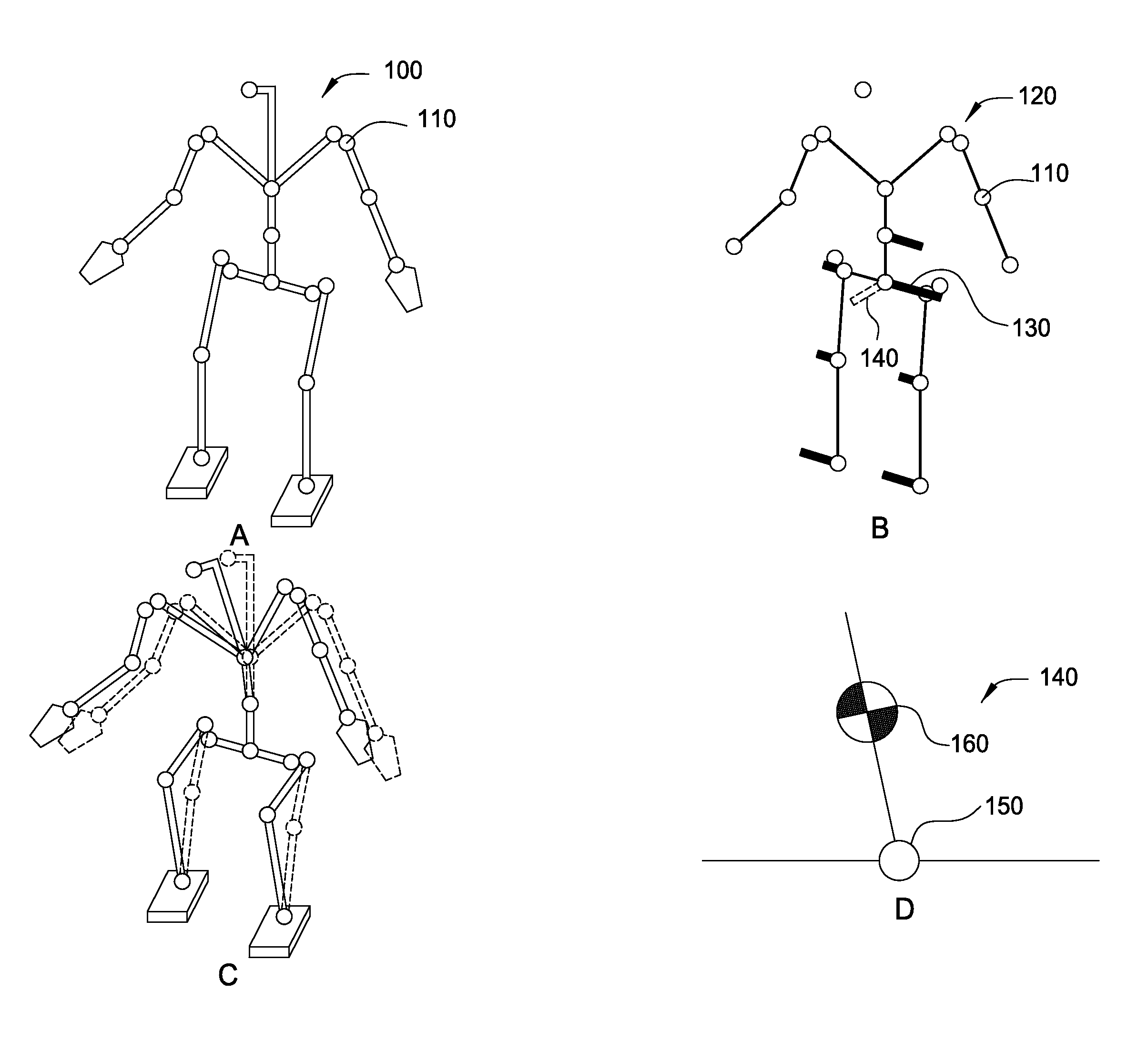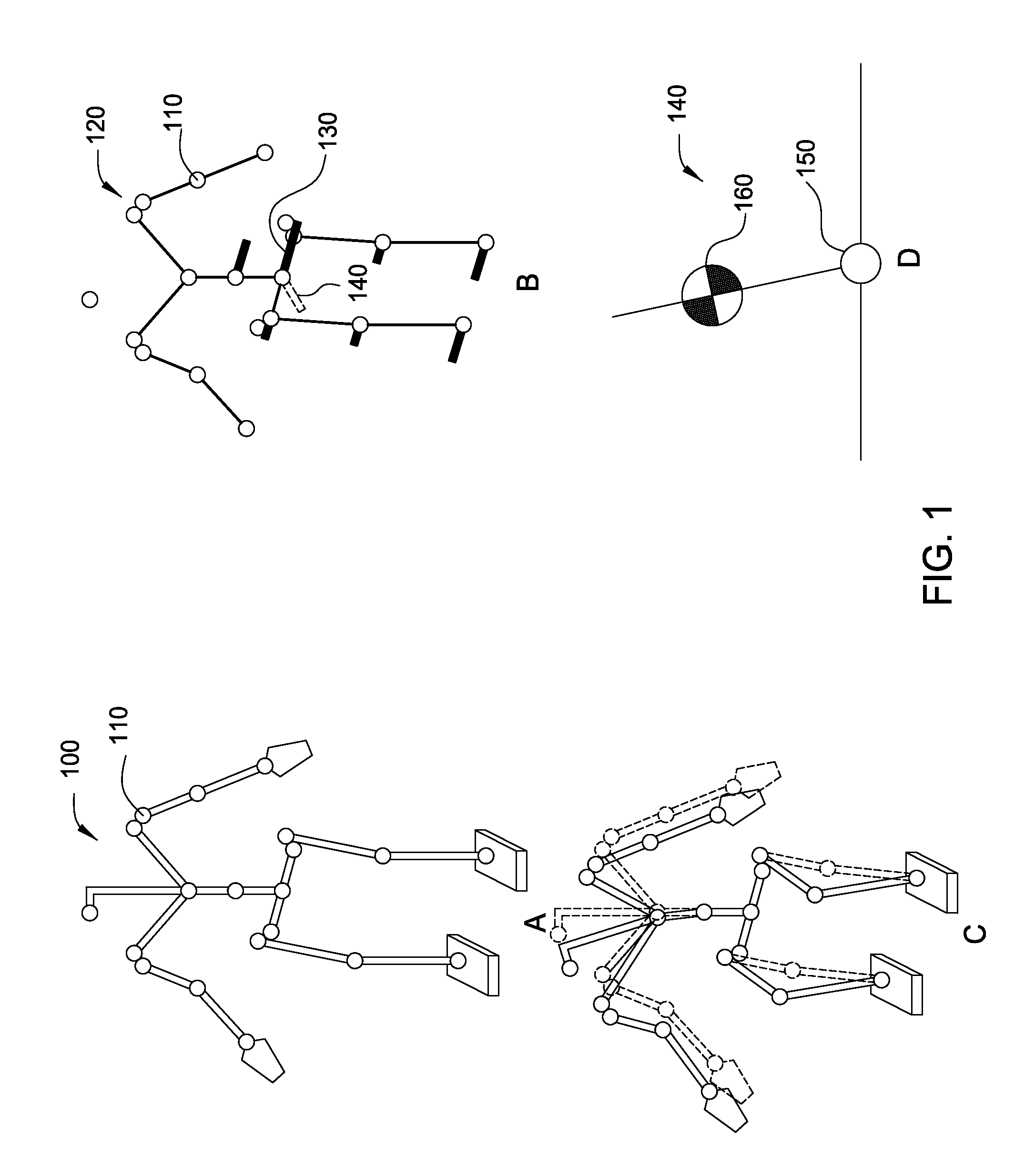Systemic derivation of simplified dynamics for humanoid robots
a robot and simplified technology, applied in the field of robot models that are simplified, can solve the problems of difficult generalization, difficult design of controllers that control full dynamics models with many degrees of freedom, and difficulty in converting between input torques of simplified models and joint torques of full models, etc., to achieve the effect of simplifying a robot model
- Summary
- Abstract
- Description
- Claims
- Application Information
AI Technical Summary
Benefits of technology
Problems solved by technology
Method used
Image
Examples
Embodiment Construction
[0014]Embodiments disclosed herein provide techniques for systematically determining simplified models of humanoid robots. As used herein, a model includes one or more equations with mass and dynamic properties of a robot, having joint torques as inputs and motion of the robot as output. Techniques disclosed herein permit a model having degrees of freedom (DOF) to be simplified to a model having a user-specified number of DOF k, where k: is less than A simplification application linearizes the robot model around a nominal state and performs a singular value decomposition of an inertial term of the model, selecting singular values and corresponding singular vectors to be kept in an inertial term of a simplified model by matching a kinetic energy of the original model to a kinetic energy of the simplified model. In one embodiment, the inertial term may be an inverse inertial matrix of a system constrained by contact constraints, and the smallest k nonzero singular values and their cor...
PUM
 Login to View More
Login to View More Abstract
Description
Claims
Application Information
 Login to View More
Login to View More - R&D
- Intellectual Property
- Life Sciences
- Materials
- Tech Scout
- Unparalleled Data Quality
- Higher Quality Content
- 60% Fewer Hallucinations
Browse by: Latest US Patents, China's latest patents, Technical Efficacy Thesaurus, Application Domain, Technology Topic, Popular Technical Reports.
© 2025 PatSnap. All rights reserved.Legal|Privacy policy|Modern Slavery Act Transparency Statement|Sitemap|About US| Contact US: help@patsnap.com



